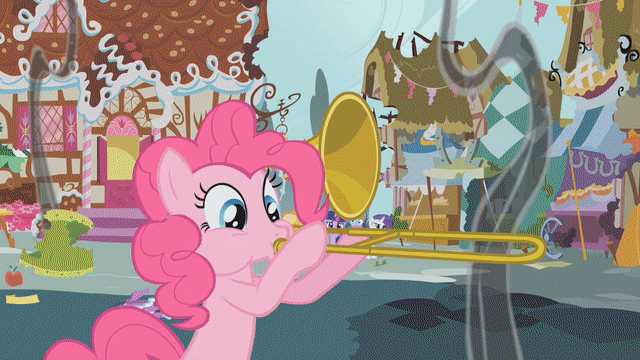Details on the people and organizations dedicated to burning America down, more Biden corruption, more of his censorship regime, a few Russo-Ukrainian War updates, and a pedophile gets ventilated. It’s the Friday LinkSwarm!
Have America’s college students suddenly converted en masse to anarcho-communist-jihadism? Not quite. Many are far left and anti-Israel. Some are foreigners, or the children of foreigners, who have imported the conspiracies and hatreds of their homelands. More, admitted under relaxed pandemic-era admissions standards and proudly ignorant of both American and world history, are taking the “decolonial” half-knowledge pushed by their elders to its logical conclusion.
But students are not the only, and perhaps not even the most important, faction active in the campus protests. As in the “mostly peaceful” Black Lives Matter protests of the summer of 2020, “outside agitators”—professional radicals and organizers, black bloc antifa thugs, Marxist-Leninist revolutionaries, and Palestinian and Islamist radicals—have played a central role in organizing and escalating the campus protests, just as they have organized and escalated the wider anti-Israel protest campaign that began almost immediately after Oct. 7. This largely decentralized network of agitators is, in turn, politically and financially supported by a vast web of progressive nonprofits, NGOs, foundations, and dark-money groups ultimately backed by big-money donors aligned with the Democratic Party.
The first hint that the protests are not entirely organic is their striking resemblance to previous rounds of organized far-left agitation, from the “uprising” of summer 2020 to the rolling antifa vs. Proud Boys brawls of 2016-17. The creation of “liberated” or “autonomous” zones on campus, for instance, is a hallmark of anarchist organizing familiar from Seattle’s Capitol Hill Autonomous Zone and New York’s City Hall Autonomous Zone four summers ago. Familiar, too, is the governance of these zones, with masked security details prohibiting filming from outsiders and directing reporters to trained media representatives. During clashes with police or with counterprotesters, students and their allies have deployed classic “bloc” tactics, covering their faces and dressing in matching outfits to promote anonymity, linking arms to interfere with police attempts to conduct arrests, and attempting “de-arrests”—i.e., the coordinated swarming of police officers—to rescue apprehended comrades. At Yale, student activists doxxed the police officers sent to clear them out of the encampment—another harassment tactic frequently deployed by antifa.
These resemblances are no accident. All of these tactics require a degree of instruction and training. Footage from Columbia showed the professional “protest consultant” Lisa Fithian, a veteran of Occupy, BLM, Standing Rock, and Stop Cop City, teaching students at Columbia how to barricade themselves into Hamilton Hall. Recent video from inside the protest encampment at UCLA, meanwhile, showed masked men leading a hand-to-hand combat training. When police cleared out encampments at the University of Texas-Austin and Columbia and the City University of New York last week, roughly half of those arrested—45 of the 79 in Texas, 134 of the 282 in New York—had no connection with the university at which they were arrested. Some, like the 40-year-old anarchist heir James Carlson, arrested at Columbia’s Hamilton Hall, had protest related rap sheets going back two decades.
“What you’re seeing is a real witches’ brew of revolutionary content interacting on campuses,” says Kyle Shideler, the director for homeland security and counterterrorism at the Center for Security Policy in Washington, D.C., and an expert on far-left domestic extremism. “On the left-wing side, you have a broad variety of revolutionary leftists, who serve as rent-a-mobs, providing the warm bodies for whatever the leftist cause of the day is. And on the other side you have the Islamist and Palestinian networks: American Muslims for Palestine and their subsidiary Students for Justice in Palestine, CAIR, the Palestinian Youth Movement. We’re seeing a real mixture of different kinds of radical foment, and it’s all being activated at the same time.”
The far-left groups active in the protests include antifa and other anarchists: Anarchist literature has been distributed in the encampments, and antifa websites have published dispatches from “comrades” on the inside. They also include various communist and Marxist-Leninist groups, including the Maoist Revolutionary Communist Party, the Party for Socialism and Liberation (PSL), and the International ANSWER coalition, a PSL front group that worked with several Muslim groups to organize the Jan. 13 March on Washington for Gaza, at which protesters flew the black jihadist flag. On April 29, for instance, shortly before masked assailants stormed Columbia’s Hamilton Hall and barricaded themselves inside, The People’s Forum—a Manhattan event space affiliated with the PSL and funded by Neville Roy Singham, a wealthy businessman who “works closely with the Chinese government media machine and is financing its propaganda worldwide,” according to an August profile in The New York Times—urged its activists to rush up to Columbia to “support our students.” Similar calls for an “emergency action” were distributed throughout radical networks in New York City.
Snip.
The “movement,” in turn, while it recruits from among students and other self-motivated radicals willing to put their bodies on the line, relies heavily on the funding of progressive donors and nonprofits connected to the upper reaches of the Democratic Party. Take the epicenter of the nationwide protest movement, Columbia University. According to reporting in the New York Post, the Columbia encampment was principally organized by three groups: Students for Justice in Palestine (SJP), Jewish Voice for Peace (JVP), and Within Our Lifetime (WOL). Let’s take each in turn.
JVP is, in essence, the “Jewish”-branch of the Boycott, Divestment and Sanctions movement, backed by the usual big-money progressive donors—including some, like the Rockefeller Brothers Fund, that were instrumental in selling Obama’s Iran Deal to the public. JVP and its affiliated political action arm, JVP Action, have received at least $650,000 from various branches of George Soros’ philanthropic empire since 2017, $441,510 from the Kaphan Foundation (founded by early Amazon employee Sheldon Kaphan), $340,000 from the Rockefeller Brothers Fund, and smaller amounts from progressive donors such as the Quitiplas Foundation, according to reporting from the New York Post and NGO Monitor, a pro-Israel research institute. JVP has also received nearly $1.5 million from various donor-advised funds—which allow wealthy clients to give anonymously through their financial institutions—run through the charitable giving arms of Fidelity Investments, Charles Schwab, Morgan Stanley, Vanguard, and TIAA, according to NGO Monitor’s review of those institutions’ tax documents.
SJP, by contrast, is an outgrowth of the Islamist networks dissolved during the U.S. government’s prosecution of the Holy Land Foundation (HLF) and related charities for fundraising for Hamas. SJP is a subsidiary of an organization called American Muslims for Palestine (AMP); SJP in fact has no “formal corporate structure of its own but operates as AMP’s campus brand,” according to a lawsuit filed last week against AJP Educational Fund, the parent nonprofit of AMP. Both AMP and SJP were founded by the same man, Hatem Bazian, a Palestinian academic who formerly fundraised for KindHearts, an Islamic charity dissolved in 2012 pursuant to a settlement with the U.S. Treasury, which froze the group’s assets for fundraising for Hamas (KindHearts did not admit wrongdoing in the settlement). And several of AMP’s senior leaders are former fundraisers for HLF and related charities, according to November congressional testimony from former U.S. Treasury official Jonathan Schanzer. An ongoing federal lawsuit by the family of David Boim, an American teenager killed in a Hamas terrorist attack in 1996, goes so far as to allege that AMP is a “disguised continuance” and “legal alter-ego” of the Islamic Association for Palestine, was founded with startup money from current Hamas official Musa Abu Marzook and dissolved alongside HLF. AMP has denied it is a continuation of IAP.
Today, however, National SJP is legally a “fiscal sponsorship” of another nonprofit: a White Plains, New York, 501(c)(3) called the WESPAC Foundation. A fiscal sponsorship is a legal arrangement in which a larger nonprofit “sponsors” a smaller group, essentially lending it the sponsor’s tax-exempt status and providing back-office support in exchange for fees and influence over the sponsorship’s operations. For legal and tax purposes, the sponsor and the sponsorship are the same entity, meaning that the sponsorship is relieved of the requirement to independently disclose its donors or file a Form 990 with the IRS. This makes fiscal sponsorships a “convenient way to mask links between donors and controversial causes,” according to the Capital Research Center. Donors, in other words, can effectively use nonprofits such as WESPAC to obscure their direct connections to controversial causes.
Something of the sort appears to be happening with WESPAC. Run by the market researcher Howard Horowitz, WESPAC reveals very little about its donors, although scattered reporting and public disclosures suggest that the group is used as a pass-through between larger institutions and pro-Palestinian radicals. Since 2006, for instance, WESPAC has received more than half a million in donations from the Elias Foundation, a family foundation run by the private equity investor James Mann and his wife. WESPAC has also received smaller amounts from Grassroots International (an “environmental” group heavily funded by Thousand Currents), the Sparkplug Foundation (a far-left group funded by the Wall Street fortune of Felice and Yoram Gelman), and the Bafrayung Fund, run by Rachel Gelman, an heir to the Levi Strauss fortune. (A self-described “abolitionist,” Gelman was featured in a 2020 New York Times feature on “The Rich Kids Who Want to Tear Down Capitalism.”) In 2022, WESPAC also received $97,000 from the Tides Foundation, the grant-making arm of the Tides Nexus.
WESPAC, however, is not merely the fiscal sponsor of the Hamas-linked SJP but also the fiscal sponsor of the third group involved in organizing the Columbia protests, Within Our Lifetime (WOL), formerly known as New York City SJP. Founded by the Palestinian American lawyer Nerdeen Kiswani, a former activist with the Hunter College and CUNY chapters of SJP, WOL has emerged over the past seven months as perhaps the most notorious antisemitic group in the country, and has been banned from Facebook and Instagram for glorifying Hamas. A full list of the group’s provocations would take thousands of words, but it has been the central organizing force in the series of “Flood”-themed protests in New York City since Oct. 7, including multiple bridge and highway blockades, a November riot at Grand Central Station, the vandalism of the New York Public Library, and protests at the Rockefeller Center Christmas-tree lighting.
More info on the people backing the Stop Cop City protestors:
Where did the money come from? From donations solicited through left-wing fundraising and organizing networks. One of those networks was the Climate Justice Alliance (CJA), an umbrella group for more than 80 “community organizations,” including the Grassroots Global Justice Alliance, which organized an illegal anti-Israel protest in the Capitol Rotunda in December at which more than 50 activists were arrested. CJA’s website promotes a grab bag of far-left causes, and includes a “Free Palestine” page proclaiming that “the path to climate justice travels through a free Palestine.” To this day—eight months after the Georgia RICO indictment alleged that the Forest Justice Defense Fund was a fraudulent charity paying for ammunition purchases in furtherance of a criminal conspiracy—CJA maintains a Stop Cop City page urging readers to donate to the Forest Justice Defense Fund and the Atlanta Solidarity Fund. CJA also endorsed a “statement of solidarity” with Stop Cop City, which claimed, by the inexorable logic of intersectionality, the fight against “gentrification and police violence” in Atlanta as part of the fight against climate change.
CJA is a subsidiary of the Movement Strategy Center, a California-based 501(c)(3) that has received funding from the Ford Foundation, the Rockefeller Foundation, the Tides Foundation, and various branches of the Open Society network. But it has another financial supporter, one that may come as a surprise: You, the American taxpayer. In November, the Environmental Protection Agency announced that it was entrusting $50 million in federal grant money under the Inflation Reduction Act to the CJA, to be distributed in sub-grants to fund “environmental justice” projects by “community-based nonprofit organizations.”
Read the whole thing.
The donors include some of the biggest names in Democratic circles: Soros, Rockefeller and Pritzker, according to a POLITICO analysis.
Two of the organizers supporting the protests at Columbia University and on other campuses are Jewish Voice for Peace and IfNotNow. Both are supported by the Tides Foundation, which is seeded by Democratic megadonor George Soros and was previously supported by the Bill and Melinda Gates Foundation. It in turn supports numerous small nonprofits that work for social change.
Soros declined to comment, but a spokesperson with the Open Society Foundations, of which Soros is the founder and chairman, said in a statement that it “has funded a broad spectrum of US groups that have advocated for the rights of Palestinians and Israelis and for peaceful resolution to the conflict in Israel.” The Bill and Melinda Gates Foundation, which has previously funded the Tides Foundation and other groups, said it no longer has active grants to Tides. It also does not support Jewish Voice for Peace or IfNotNow.
Covers some of the same ground as the Tablet piece, but still worth reading the whole thing. (Hat tip: Ed Driscoll at Instapundit.)
Former president Donald Trump’s criminal trial in Florida for allegedly mishandling classified documents is being postponed indefinitely.
Trump-appointed judge Aileen Cannon ordered a new pretrial schedule for motions and discovery Tuesday afternoon after the classified documents case was originally scheduled to go to trial later this month.
“The Court also determines that finalization of a trial date at this juncture — before resolution of the myriad and interconnected pre-trial and CIPA issues remaining and forthcoming — would be imprudent and inconsistent with the Court’s duty to fully and fairly consider the various pending pre-trial motions before the Court, critical CIPA issues, and additional pretrial and trial preparations necessary to present this case to a jury,” Cannon said in her order.
The trial will likely be pushed until after the 2024 presidential election this November.
It’s hard to exaggerate how abysmal Biden’s polling has been lately.
No incumbent president should ever want to be near 43 percent in a head-to-head ballot test. Yet here is Joe Biden at 43 percent in the latest CNN poll, 43 percent in the latest Morning Consult poll, 43 percent in the latest Economist/YouGov poll, and 43 percent in the latest Harvard/Harris poll. (NB: Biden ticked up to 48 when Harvard/Harris pushed respondents to choose between Trump and Biden, and the Economist/YouGov poll had RFK Jr. in the mix.)
Detect a trend? (There are other polls that have Biden a little higher.)
It’s no mystery why Biden’s polling is at crisis levels.
An incumbent president’s level of support in a reelection bid is typically tethered closely to his job approval. It’s hard to get much more than a couple of points above it. Biden’s job approval is at 40 percent in the RealClearPolitics polling average and at 39.3 in the 538 polling average.
Desperate for cash, James Biden traveled to Qatar with the aim of personally presenting to Qatari Finance Minister Ali Sharif Al Emadi who was later arrested and charged with bribery and laundering over $5 billion and sentenced to 20 years in prison. While little is known about the details behind the internal power struggle in the corrupt terror state, Al Emadi had been accused of “channeling Qatari support to various Islamist groups over the years” as well as subverting American and European institutions with sizable infusions of Qatari money.
As the American end of the deal fell apart in recriminations and lawsuits, one of the litigants received “blood-stained currency” and a “torture ticket” after suing James Biden and his partners. The blood money came from a Middle Eastern country known to be associated with terrorists. But the FBI refused to name the country and insisted the media also hide its identity.

Rep. Jim Jordan’s (R-Ohio) Select Subcommittee on the Weaponization of the Federal Government released an 800-page report that reads like Ayn Rand’s “Atlas Shrugged.”
Take a look:
- In March 2021, an Amazon employee emailed others within the company about the reason for the Amazon bookstore’s new content moderation policy change: “[T]he impetus for this request is criticism from the Biden Administration about sensitive books we’re giving prominent placement to.”
- In March 2021, just one day prior to a scheduled call with the White House, an Amazon employee explained how changes to Amazon’s bookstore policies were being applied “due to criticism from the Biden people.”
- In July 2021, when Facebook executive Nick Clegg asked a Facebook employee why the company censored the man-made theory of the SARS-CoV-2 virus, the employee responded: “Because we were under pressure from the [Biden] administration and others to do more. . . . We shouldn’t have done it.”

She's a loving girl.
pic.twitter.com/HGrpk7WQKr
— Figen (@TheFigen_) May 8, 2024
(Hat tip: Ace of Spades HQ.)
Hit the tip jar if you’re so inclined.

